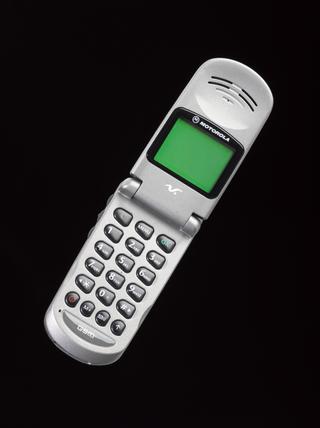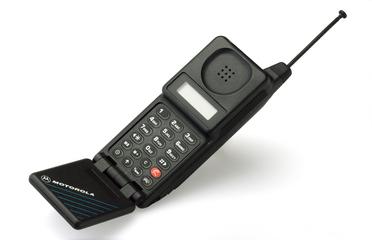





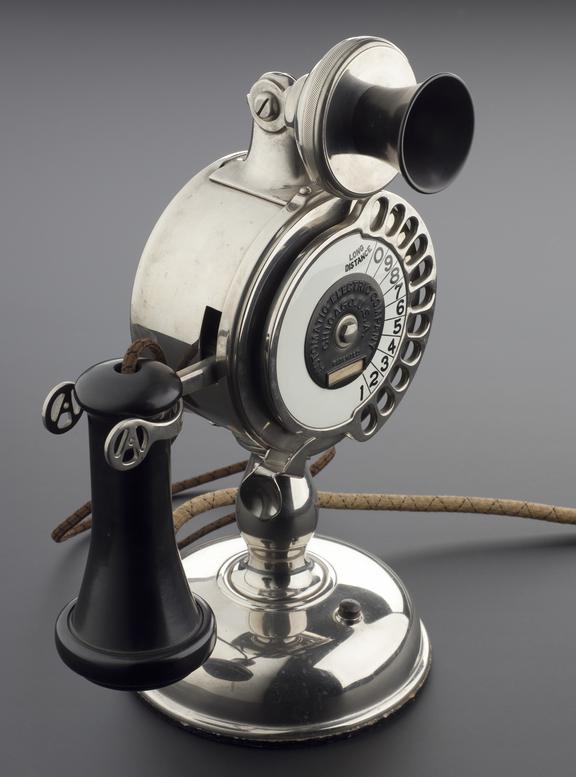
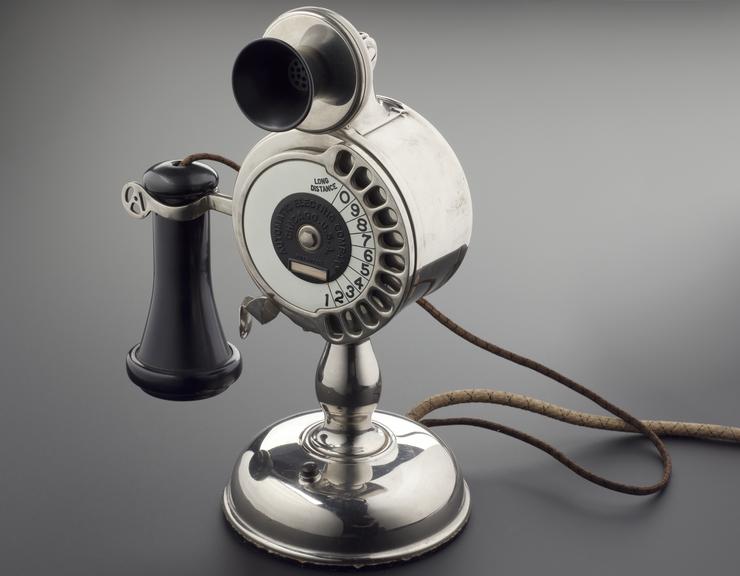
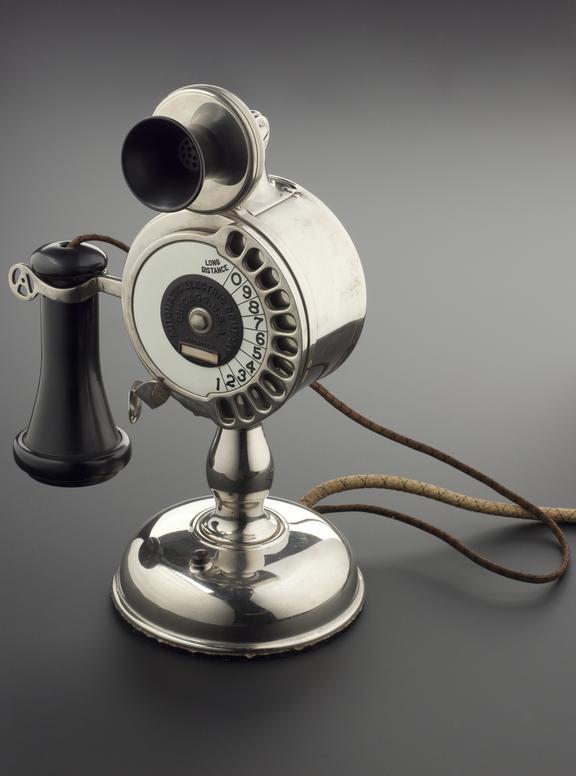
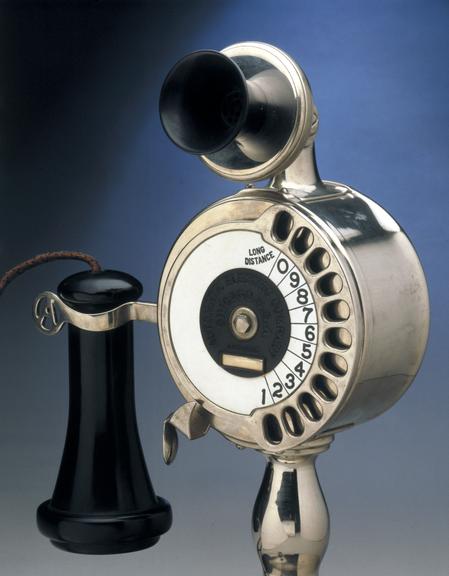
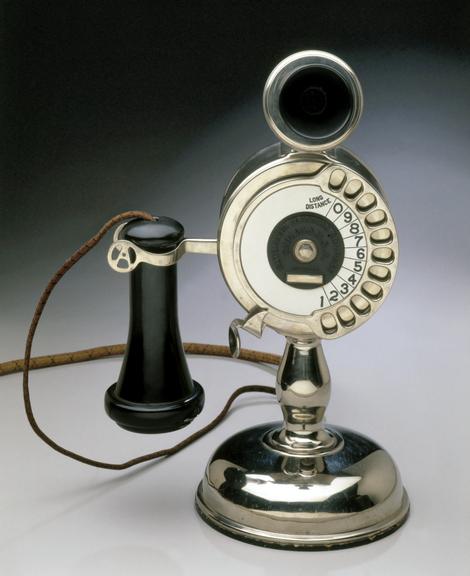
Strowger table pattern telephone, manufactured by the Automatic Electric Company, Chicago, United States, 1901-1910.
These telephones worked with automatic telephone exchanges, which appeared in the USA about twenty years before the UK. The principle of operation was devised by Almon Strowger (1839-1902), a funeral director in Kansas City, because the wife of his business rival worked in the local telephone exchange, and Strowger believed that she deliberately connected calls intended for him to his rival. This 'pot bellied' phone is well made, and was intended to be seen as well as used. The user would dial the desired number, then press the button of the base of the telephone to ring the other line.
Details
- Category:
- Telecommunications
- Object Number:
- 1926-1056
- Measurements:
-
overall (inc. cables): 310 mm x 300 mm x 230 mm, 2.65 kg
weight: 26.506kg
weight: 58.43603lbs
- type:
- telephone
- credit:
- Donated by BT Heritage and Archives


